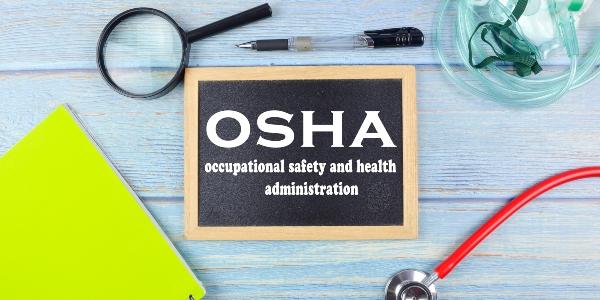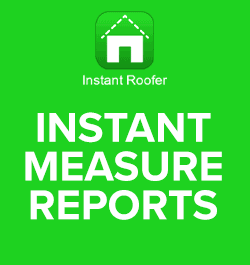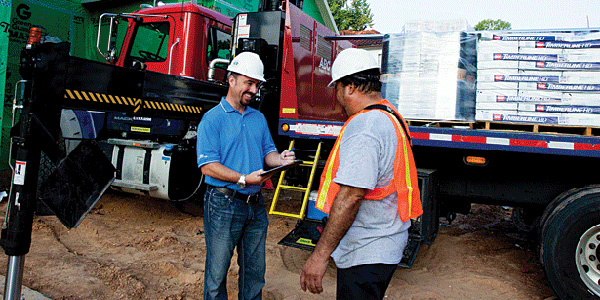Navigating OSHA During COVID-19

By Trent Cotney, Cotney Construction Law, LLP.
Proper steps need to be taken to ensure that workers are not exposed to COVID-19 and that, if exposed, those workers are not exposing others.
With the Coronavirus pandemic affecting employers throughout the nation, it can be challenging to navigate the influx of information from various government authorities, health care professionals and the media.
Luckily, OSHA recently published Guidance on Preparing Workplaces for COVID-19, which details some safety precautions employers can and should utilize to protect employees (https://www.osha.gov/Publications/OSHA3990.pdf.). While the information in the OSHA guidelines is useful, OSHA has not yet published any Coronavirus-specific standards or mandates for employers to abide by when tackling the virus. This can be particularly troubling for construction employers, who are often the primary target of OSHA inspections and investigations. Therefore, for the time-being, contractors should ensure that they are complying with existing regulations covering workplace safety and are applying those to the new risks associated with the outbreak of COVID-19.
Existing OSHA Regulations
It is important to note that the General Duty Clause found in Section 5(a)(1) of the Occupational Safety and Health Act of 1970, 29 USC 654(a)(1), which requires employers to furnish to each worker “employment and a place of employment, which are free from recognized hazards that are causing or are likely to cause death or serious physical harm” has particularly profound implications when applied to the current pandemic. Because employers have a general duty to ensure a safe workplace for their employees, failing to implement proper protocols to protect the workplace from the risks and effects of COVID-19 could render a violation of the General Duty Clause. In other words, proper steps need to be taken to ensure that workers are not exposed to COVID-19 and that, if exposed, those workers are not exposing others.
Fortunately, many of the existing OSHA regulations lend themselves to protecting workers in the event of a viral pandemic like COVID-19. For example, OSHA’s Personal Protective Equipment (PPE) standards, which require using gloves, eye and face protection and respiratory protection as is necessary to protect workers, can also be used to help prevent the spread of COVID-19. Construction employers should continue to develop and enforce their respiratory protection program in accordance with the Respiratory Protection Standard found in 29 C.F.R. 1910.134, not only to limit the risks traditionally found on construction sites, but also to prevent the spread of COVID-19. Additionally, while OSHA’s Bloodborne Pathogens standard found in 29 C.F.R. 1910.1030 is not required in the wake of the current outbreak – as viruses spread by respiratory secretions are not covered by the Bloodborne Pathogens standard – many of its provisions offer a general framework that may help control some sources of the virus, most notably, exposures to body fluids. For example, the Bloodborne Pathogen standard requires employees to wash their hands after removing PPE, which can and should be followed in workplaces when dealing with COVID-19 as well. Additionally, 29 C.F.R. 1910(d)(4)(ii)(A) requires that work surfaces that may have been contaminated by a bloodborne pathogen be decontaminated with appropriate disinfectant as soon as feasible. This is in line with the Center for Disease Control’s (CDC) employer guidelines for employers amidst the COVID-19 outbreak.
Additional Measures to Ensure a Safe Working Environment
In complying with OSHA’s General Duty Clause, it is important to take additional precautions in excess of what is required by existing OSHA Regulations, to limit the spread of COVID-19. The CDC and World Health Organization (WHO) provide that the most effective and necessary control that employers should institute in the workplace is the practice of good hand hygiene. Hand hygiene consists of providing employees the opportunity and ability to wash with soap and water or use alcohol-based hand rubs containing at least 60% alcohol on a regular basis. Soap and water are best for hands that are visibly soiled. Workers should be encouraged to perform hand hygiene both before and after contact with other employees and customers, and after contact with any potentially infectious materials, including PPE.
Other basic, standard precautions that employers are encouraged to take include institution of safe waste management protocols, and cleaning and disinfecting door handles or other interior areas accessed by workers during the performance of their work, as well as tools, truck cabs, and equipment. These are both areas where familiarity with OSHA’s Bloodborne Pathogens standard and the protocols required under those regulations can be particularly helpful when implementing proper virus controls in your workplace.
When an Employee Gets Infected
Unfortunately, as the virus spreads and the number of confirmed cases continues to rise, the chances of one of your employees contracting the virus also increases. It is therefore imperative that employers not only learn to recognize the signs and symptoms of COVID-19, but also that employers take the necessary precautions if an employee exhibits such symptoms.
Infection with SARS-CoV-2, the virus that causes COVID-19, can cause illnesses that range anywhere from mild to severe, and in some cases, symptoms can be fatal. The symptoms for employers to be aware of typically include fever, cough and shortness of breath. Some people infected with the virus have also reported experiencing other non-respiratory symptoms. Generally, the symptoms appear in as few as 2 days or as long as 14 days after exposure. Older adults and people who have severe underlying chronic medical conditions like heart or lung disease seem to be at higher risk for developing more serious complications from COVID-19.
The Equal Employment Opportunity Commission (EEOC) advises that, in the event of a pandemic like COVID-19, employers are encouraged to conduct appropriate medical screenings and examinations on employees who are exhibiting symptoms in the workplace or who otherwise pose a “direct threat” to the safety and welfare of the general population. In early March 2020, the Equal Employment Opportunity Commission (EEOC) released a statement on the COVID-19 pandemic, referring employers to an advisory opinion the EEOC previously published in 2009 amidst the H1N1 (“swine flu”) outbreak. In its 2009 advisory opinion, the EEOC implemented a temporary waiver of certain provisions of the Americans with Disabilities Act (ADA) that would otherwise prohibit an employer from taking action based on an employee’s medical conditions. In taking the position that illnesses related to global pandemics are dissimilar to the disabilities that the ADA was designed to protect, the EEOC calls for more flexibility in allowing employers to conduct medical examinations and screenings in the workplace if doing so is “consistent with a business necessity” or if the employer has “a reasonable belief the employee poses a direct threat to the health or safety” of others and the workplace.
EXAMPLE: An employer may institute screenings for employees who exhibit flu-like symptoms in the workplace but may not make such inquiries to employees who work remotely or do not come into contact with other employees as part of their job description.
Relying on the CDC’s recommendations for employers amidst the COVID-19 pandemic, employers are able to screen and examine employees to ensure the health and safety of others in the workplace. The CDC suggests that employees should be screened if (a) they are exhibiting flu-like symptoms such as fever, dry cough, shortness of breath, etc.; (b) the employee recently returned from travel abroad; or (c) the employee is known to have been exposed to a person who is a confirmed carrier of the virus. During these examinations, an employer may ask an employee if he or she is experiencing any flu-related symptoms, what symptoms the employee is experiencing, whether the employee has visited a doctor or has been tested for COVID-19, the employee’s recent travel history, and the employee’s reasoning for any recent work absence.
The CDC and U.S. Department of Labor (DOL) advise that employees who exhibit flu-related symptoms can and should be sent home immediately and prohibited from returning to work until they are symptom-free for at least 24 hours. If an employee has traveled to a country designated a Level 3 travel risk area (currently China, Iran, South Korea, and much of Europe), it is recommended that the employee be sent home immediately and be required to remain away from the workplace for 14 days. Further, if an employee is confirmed to have COVID-19, it is suggested that all employees who came in contact with that employee are sent home and a professional cleaning company is hired to do a full cleaning of the affected workspace.
Ultimately, any medical information employers received from an employee during one of these screenings, examinations, or otherwise, must remain confidential. If an employee is confirmed to have COVID-19, employers should inform other employees about their potential exposure to the virus, but the identity of the infected employee must remain confidential to the extent possible.
With all that being said, employers must be careful not to violate any state, federal, or local laws when implementing new protocols designed to prevent the spread of COVID-19. For instance, employers should avoid taking adverse employment actions (termination, demotion, etc.) against an employee who misses work or is sent home due to the outbreak of COVID-19. Additionally, employers must implement all such protocols uniformly and equally amongst all employees to avoid violating anti-discrimination laws. For example, if an employer chooses to send an employee home for exhibiting flu-like symptoms, it should also send home all other employees exhibiting flu-like symptoms.
The CDC warrants that, if an employee is identified as a “direct threat” to the safety and welfare of the workplace based on the information gathered by an appropriate medical screening, that employee should be sent home or separated from the rest of the workforce.
If a worker does become infected, the employer should contact anyone who the worker came in contact with – including co-workers and customers – and advise them of the potential for infection. If any workers are admitted to in-patient hospitals as a result of a COVID-19 infection, the employer must report the case to OSHA and identify the illness on its OSHA 300 Log.
On the other end of the spectrum, some carriers of COVID-19 are asymptomatic, meaning they have contracted the virus but experience no symptoms. Because employer medical screenings would be fruitless if performed on an asymptomatic employee, it is crucial that employers implement safety protocols within OSHA and the CDC’s guidelines to prevent the spread of the virus amongst employees.
Now – more than ever – it is vital that employers take action to institute safety procedures that comport with their duties pursuant to OSHA’s General Duty Clause. While it can be assumed, based on President Trump’s recent memorandum on Coronavirus guidelines encouraging government employees to work from home, limit face-to-face interactions and adjust their daily operations, that the volume of OSHA investigations will decrease over the coming weeks and months, OSHA maintains that it is fully operational as of now. Regardless of the reduced risk of inspection, it is important for each employer to understand the ramifications of failing to update its safety procedures in the wake of the current outbreak and govern their behavior accordingly.
Author’s note: The information contained in this article is for general educational purposes only. This information does not constitute legal advice, is not intended to constitute legal advice, nor should it be relied upon as legal advice for your specific factual pattern or situation.
Trent Cotney is the CEO of Cotney Construction Law. He is also General Counsel of NRCA, FRSA, WSRCA, RT3 and NSA. With 14 offices across the United States, Cotney Construction Law fights for the roofing industry nationwide.
For more information, please go to www.cotneycl.com or www.roofinglawyer.com.
Learn more about Cotney Construction Law in their RCS directory.






















Comments
Leave a Reply
Have an account? Login to leave a comment!
Sign In